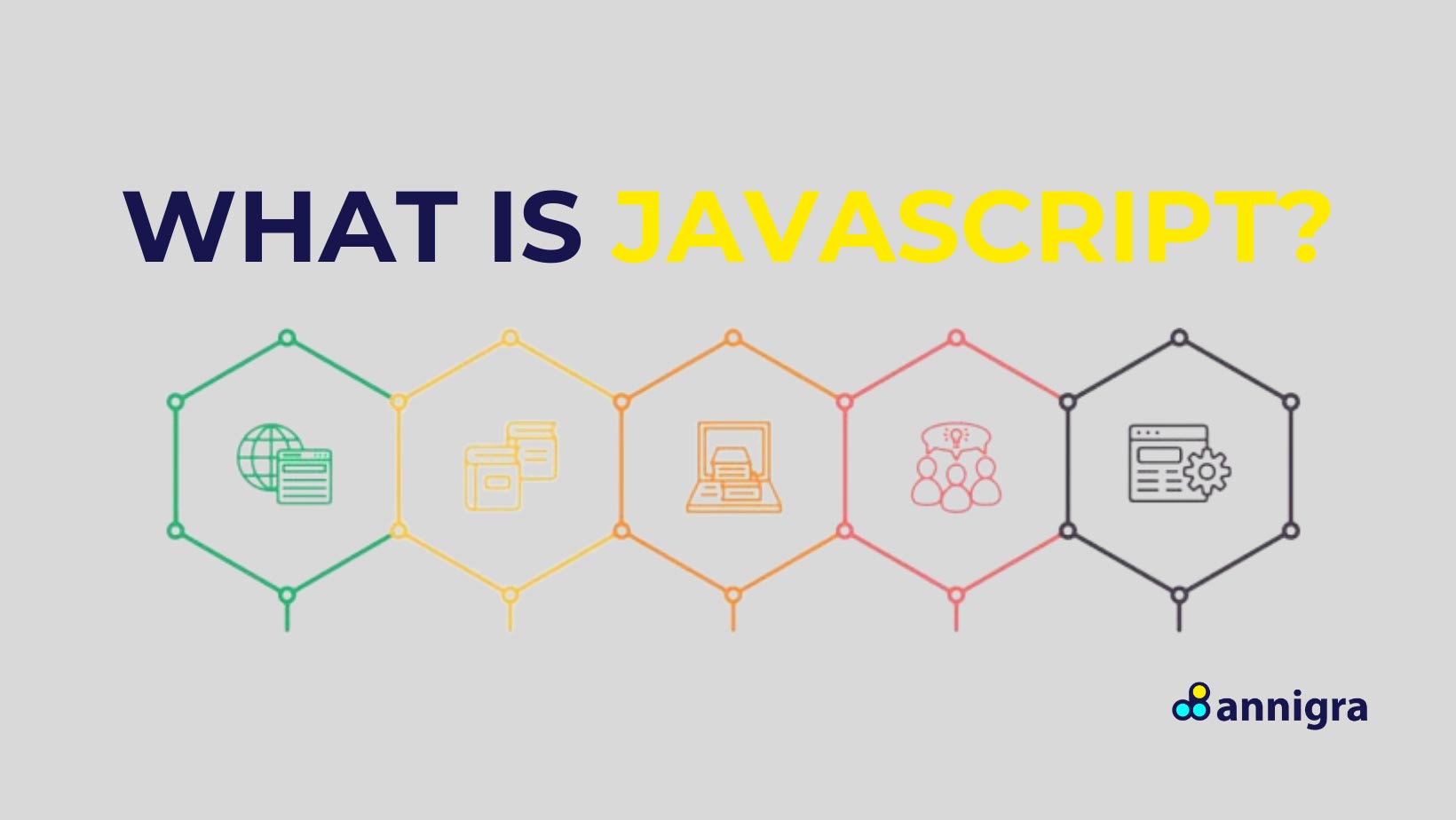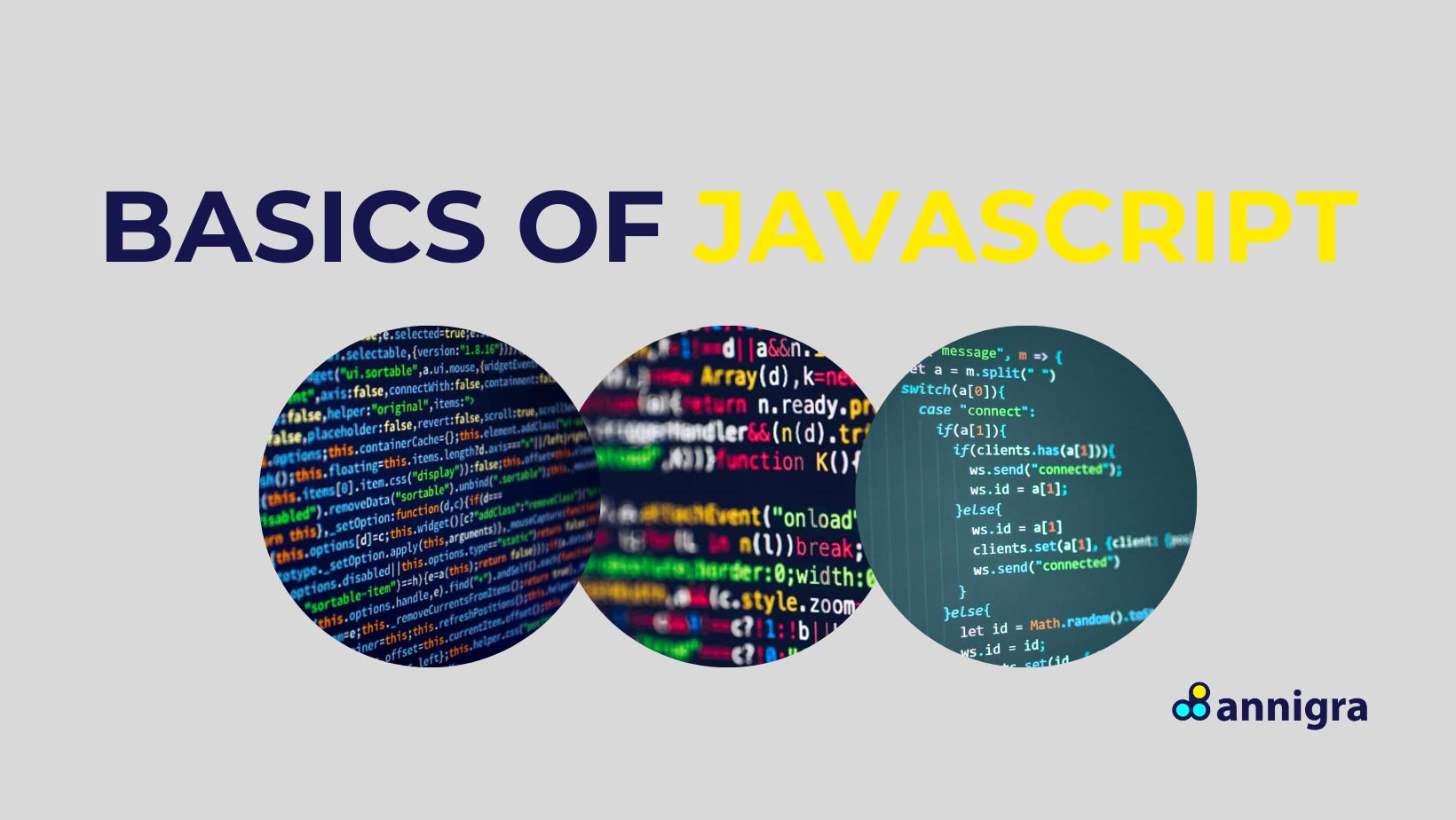Table of Contents
ToggleUnderstanding JavaScript
JavaScript, often abbreviated as JS, is a fundamental programming language that drives modern websites’ dynamic and interactive elements. In this comprehensive guide tailored for Portland web designers, we’ll explore the intricacies of JavaScript, its role in web development, and how it shapes the digital experiences we create. Let’s journey through the evolution, core concepts, advanced features, best practices, and common misconceptions surrounding JavaScript.
A brief history of JavaScript
JavaScript began in 1995 when Brendan Eich developed it at Netscape Communications Corporation. Originally named Mocha, it was later renamed LiveScript before settling on JavaScript. Despite its name, JavaScript shares little with Java and was primarily designed to bring interactivity to web pages. Over the years, JavaScript has evolved into a versatile language used in web development and server-side scripting, desktop applications, and IoT devices.
Importance of JavaScript in modern web development
JavaScript is indispensable in modern web development, enabling developers to create dynamic user interfaces, handle asynchronous operations, interact with web APIs, and build scalable web applications. As the demand for rich, interactive web experiences grows, proficiency in JavaScript becomes essential for Portland web designers. JavaScript frameworks like React, Angular, and Vue have revolutionized the way web applications are built, providing tools and abstractions that streamline development and enhance productivity.
Overview of what the article will cover
This article serves as a comprehensive guide to JavaScript, covering its basics, core concepts, advanced features, applications in web development, and beyond. We’ll delve into JavaScript’s interaction with HTML and CSS, its role in frontend and server-side development, best practices for writing clean and maintainable code, and much more. By the end of this guide, you’ll have a deep understanding of JavaScript and how to leverage its power to create stunning web experiences for your clients.
Core Concepts in JavaScript
What is JavaScript?
JavaScript is a high-level, interpreted programming language that conforms to the ECMAScript specification. It allows developers to add interactivity to web pages by manipulating HTML elements, styling with CSS, and responding to user actions. Web browsers execute JavaScript, enabling dynamic updates to the content and behavior of web pages without requiring page reloads.
How JavaScript works with HTML and CSS
JavaScript interacts with HTML and CSS to dynamically modify the content and style of web pages. It can access and manipulate HTML elements, change CSS styles, and respond to user interactions through event handling. By combining JavaScript with HTML and CSS, developers can create rich and interactive user interfaces that enhance the browsing experience.
Syntax and basic constructs
JavaScript syntax is similar to other programming languages like C and Java. It includes variables, data types (such as numbers, strings, and booleans), operators (for arithmetic, comparison, and logical operations), and control structures (like if-else statements and loops). Understanding JavaScript syntax is essential for writing clear, concise, and easy-to-maintain code.
Core Concepts in JavaScript
Control Structures
Control structures such as if-else statements, switch cases, and loops (for, while, do-while) allow developers to control the execution flow in JavaScript programs based on certain conditions. These control structures are essential for implementing logic and making decisions within a program.
Functions and Scope
Functions in JavaScript are blocks of reusable code that can accept inputs (parameters) and return outputs. They have their scope, which determines the visibility and lifetime of variables declared within them. Understanding function scope is crucial for managing variables and preventing conflicts in larger codebases.
Events and Event Handling
JavaScript enables developers to respond to user interactions and browser events through event handling. Event listeners can be attached to HTML elements to execute JavaScript code when specific events occur (e.g., click, hover, submit). Event handling is essential for creating interactive web applications that respond to user input in real time.
Document Object Model (DOM) Manipulation
The Document Object Model (DOM) represents the structure of HTML documents as a hierarchical tree of objects. JavaScript can manipulate the DOM dynamically, allowing developers to add, remove, or modify HTML elements and attributes. DOM manipulation is the foundation of dynamic web development and is used to create interactive user interfaces.
Advanced JavaScript Features
Object-oriented JavaScript
JavaScript’s object-oriented nature allows developers to create and manipulate objects using constructor functions, object literals, or ES6 classes. Object-oriented principles such as inheritance and encapsulation can be implemented in JavaScript through prototypes and closures. Understanding object-oriented JavaScript is essential for building complex and maintainable applications.
Closures and IIFEs (Immediately Invoked Function Expressions)
Closures are functions that retain access to variables from their lexical scope, even after the outer function has finished executing. IIFEs are anonymous functions executed immediately after being defined, providing a way to encapsulate code and avoid polluting the global scope. Closures and IIFEs are powerful JavaScript concepts commonly used to manage state and create private variables.
Asynchronous JavaScript
JavaScript’s asynchronous nature enables non-blocking I/O operations, making it suitable for handling tasks such as fetching data from servers or processing user input without freezing the UI. Asynchronous operations can be managed using callbacks, promises, or async/await syntax. Understanding asynchronous JavaScript is crucial for building responsive and efficient web applications.
ES6+ features
ECMAScript 6 (ES6) introduced several new features and syntax enhancements to JavaScript, including arrow functions, classes, modules, template literals, destructuring assignments, and more. These features improve code readability, maintainability, and developer productivity. Adopting ES6+ features can streamline development and make code more expressive and concise.
JavaScript in Web Development
Role in frontend development
JavaScript is the cornerstone of frontend development, enabling designers to create interactive user interfaces and responsive web experiences. Frameworks and libraries like React, Angular, and Vue build upon JavaScript to simplify the development of complex UI components and SPAs. Frontend developers in Portland leverage JavaScript to create visually stunning and engaging websites that resonate with users.
Interaction with web APIs
JavaScript allows web applications to interact with external resources and services through web APIs. The Fetch API enables asynchronous data fetching over the network. At the same time, the Web Storage API provides persistent storage options on the client side. Interacting with web APIs is essential for integrating third-party services and accessing data from external sources.
Frameworks and libraries:
JavaScript frameworks and libraries streamline web development by providing pre-built components, state management solutions, and routing mechanisms. React, Angular, and Vue are popular for building SPAs and frontend applications. These frameworks abstract away everyday tasks and provide developers with tools to build scalable and maintainable web applications.
Single Page Applications (SPAs) and JavaScript
SPAs load a single HTML page and dynamically update its content based on user interactions, resulting in a seamless and fluid browsing experience. JavaScript frameworks like React, Angular, and Vue excel at building SPAs by handling client-side routing, state management, and data fetching. SPAs offer fast and responsive user experiences that rival native applications, making them an attractive choice for web developers in Portland.
Beyond Web Browsers
JavaScript on the server-side (Node.js)
Node.js allows developers to run JavaScript code on the server side, enabling the development of scalable and high-performance server applications, APIs, and microservices. With Node.js, developers can leverage JavaScript’s familiarity and ecosystem for full-stack development. Node.js is widely adopted in Portland for building server-side applications and real-time web services.
Desktop and mobile app development with JavaScript
Frameworks like Electron and React Native enable developers to build cross-platform desktop and mobile applications using JavaScript, HTML, and CSS. Electron combines Node.js and Chromium to create desktop apps, while React Native allows for building native mobile apps with JavaScript and React components. These frameworks empower developers in Portland to create desktop and mobile experiences using familiar web technologies.
Internet of Things (IoT) and JavaScript
JavaScript’s lightweight and event-driven nature make it suitable for IoT development, where resource constraints and real-time responsiveness are critical. Platforms like Johnny-Five and Espruino provide JavaScript APIs for interacting with hardware devices, enabling developers to build IoT applications for various use cases. JavaScript’s versatility extends beyond traditional web development and opens up new opportunities in emerging technologies like IoT.
Best Practices and Performance Optimization
Writing clean and maintainable JavaScript code
Adhering to coding conventions, using descriptive variable names, and organizing code into functions and modules can improve code readability and maintainability. Documenting code effectively and adopting a consistent coding style are also essential practices. Writing clean and maintainable code ensures that codebases remain manageable and scalable over time.
Debugging and testing JavaScript code
Browser developer tools, debugger statements, and testing frameworks like Jest and Mocha can help developers debug and test JavaScript code effectively. Writing unit, integration, and end-to-end tests ensure code correctness and reliability. Testing JavaScript code is essential for identifying bugs and ensuring that applications behave as expected across different environments.
Performance optimization techniques
Minimizing network requests, reducing render-blocking resources, and optimizing JavaScript execution can improve the speed and responsiveness of web applications. Code splitting, lazy loading, and caching are strategies for optimizing performance and enhancing user experience. Performance optimization is crucial for delivering fast, seamless web experiences that keep users engaged and satisfied.
The Ecosystem and Community
Popular tools and resources
Integrated development environments (IDEs) like Visual Studio Code, linters like ESLint, and package managers like npm and Yarn streamline JavaScript development workflows. Online forums, communities, and learning platforms provide resources for developers to enhance their skills and stay updated with industry trends. Portland’s vibrant tech community offers meetups, workshops, and networking events for JavaScript developers to connect and collaborate.
Future trends and ECMAScript updates: The JavaScript ecosystem evolves rapidly, regularly introducing new features, APIs, and tools. Staying updated with the latest ECMAScript updates and industry trends is essential for JavaScript developers to remain competitive. ECMAScript updates like ES6 and beyond introduce new language features and syntax enhancements that improve developer productivity and code maintainability.
Common Questions and Misconceptions
-
Is JavaScript the same as Java?
No, JavaScript is not the same as Java. Despite the similarity in their names, they are two distinct programming languages with different syntax, semantics, and use cases. JavaScript is primarily used for client-side scripting in web development. At the same time, Java is a general-purpose programming language often used for building standalone applications, web servers, and Android mobile apps.
-
Can JavaScript be used for backend development?
Yes, JavaScript can be used for backend development with the help of platforms like Node.js. Node.js allows developers to run JavaScript code on the server side, enabling the creation of scalable and high-performance backend applications, APIs, and microservices. With Node.js, developers can use JavaScript for both frontend and backend development, facilitating full-stack development with a unified language.
-
What are the limitations of JavaScript?
While JavaScript is a versatile and widely used programming language, it does have some limitations:
- Browser compatibility: JavaScript execution may vary slightly across different web browsers, leading to compatibility issues.
- Single-threaded nature: JavaScript is single-threaded, which means it can only execute one task at a time. This can lead to performance bottlenecks, especially when handling heavy computational tasks or blocking I/O operations.
- Security concerns: Due to its client-side nature, JavaScript code is visible to users and can be manipulated, potentially leading to security vulnerabilities such as cross-site scripting (XSS) attacks.
- Lack of strong typing: JavaScript is dynamically typed, meaning variable types are determined at runtime rather than compile time. This can sometimes lead to unexpected behavior and errors in large codebases.
-
How to learn JavaScript effectively?
Learning JavaScript effectively involves studying theory, practical application, and continuous practice. Here are some tips for learning JavaScript effectively:
- Start with the basics: Learn fundamental concepts such as variables, data types, operators, and control structures.
- Practice coding: Write code regularly to reinforce your understanding of concepts and improve your problem-solving skills.
- Build projects: Create real-world projects to apply your knowledge and gain hands-on experience.
- Use online resources: Utilize online tutorials, courses, and documentation to supplement your learning.
- Join communities: Participate in online forums, developer communities, and coding groups to collaborate with others and learn from their experiences.
- Stay updated: Keep abreast of new features, best practices, and industry trends in JavaScript development.
-
What are the job opportunities for JavaScript developers?
Given the widespread use of JavaScript in web development, mobile app development, and backend development, JavaScript developers are in high demand across various industries. Some job opportunities for JavaScript developers include
- Frontend Developer: Design and implement user interfaces using HTML, CSS, and JavaScript frameworks like React, Angular, or Vue.
- Backend Developer: Developing server-side applications, APIs, and databases using Node.js and other JavaScript frameworks like Express.js
- Full-stack Developer: Building both frontend and backend components of web applications using a combination of JavaScript technologies.
- Mobile App Developer: Developing cross-platform mobile applications using frameworks like React Native or building progressive web apps (PWAs) with JavaScript.
- Software Engineer: Working on a wide range of software projects, including web applications, desktop applications, and server-side systems, using JavaScript and related technologies.
- JavaScript Developer Advocate/Evangelist: Promoting JavaScript technologies, educating the community, and advocating for best practices through writing, speaking, and organizing events.
- JavaScript developers have diverse career opportunities and can find roles in startups, tech companies, agencies, and enterprise organizations.
References and Further Reading
- Eloquent JavaScript by Marijn Haverbeke
– Link: [Eloquent JavaScript](https://eloquentjavascript.net/)
- JavaScript: The Good Parts by Douglas Crockford
– Link: [JavaScript: The Good Parts](https://www.amazon.com/JavaScript-Good-Parts-Douglas-Crockford/dp/0596517742)
- Mozilla Developer Network (MDN) JavaScript Guide
– Link: [MDN JavaScript Guide](https://developer.mozilla.org/en-US/docs/Web/JavaScript/Guide)
- ECMAScript specification
– Link: [ECMAScript specification](https://www.ecma-international.org/publications/standards/Ecma-262.htm)
- You Don’t Know JS series by Kyle Simpson
– Link: [You Don’t Know JS](https://github.com/getify/You-Dont-Know-JS)
- JavaScript.info
– Link: [JavaScript.info](https://javascript.info/)
- freeCodeCamp
– Link: [freeCodeCamp](https://www.freecodecamp.org/)
- JavaScript subreddit on Reddit
– Link: [JavaScript subreddit](https://www.reddit.com/r/javascript/)
- Stack Overflow JavaScript tag
– Link: [Stack Overflow JavaScript tag](https://stackoverflow.com/questions/tagged/javascript)
- GitHub repositories for popular JavaScript frameworks and libraries
– Link: [GitHub repositories](https://github.com/trending/javascript)
JavaScript is a versatile and powerful language that empowers Portland web designers to create engaging and interactive web experiences. By mastering its fundamentals, exploring advanced features, and adopting best practices, designers can leverage JavaScript to build cutting-edge websites and applications that captivate audiences and drive business success in the digital age. Whether you’re a seasoned developer or a novice designer, JavaScript’s versatility and power empower you to bring your creative visions to life on the web.








